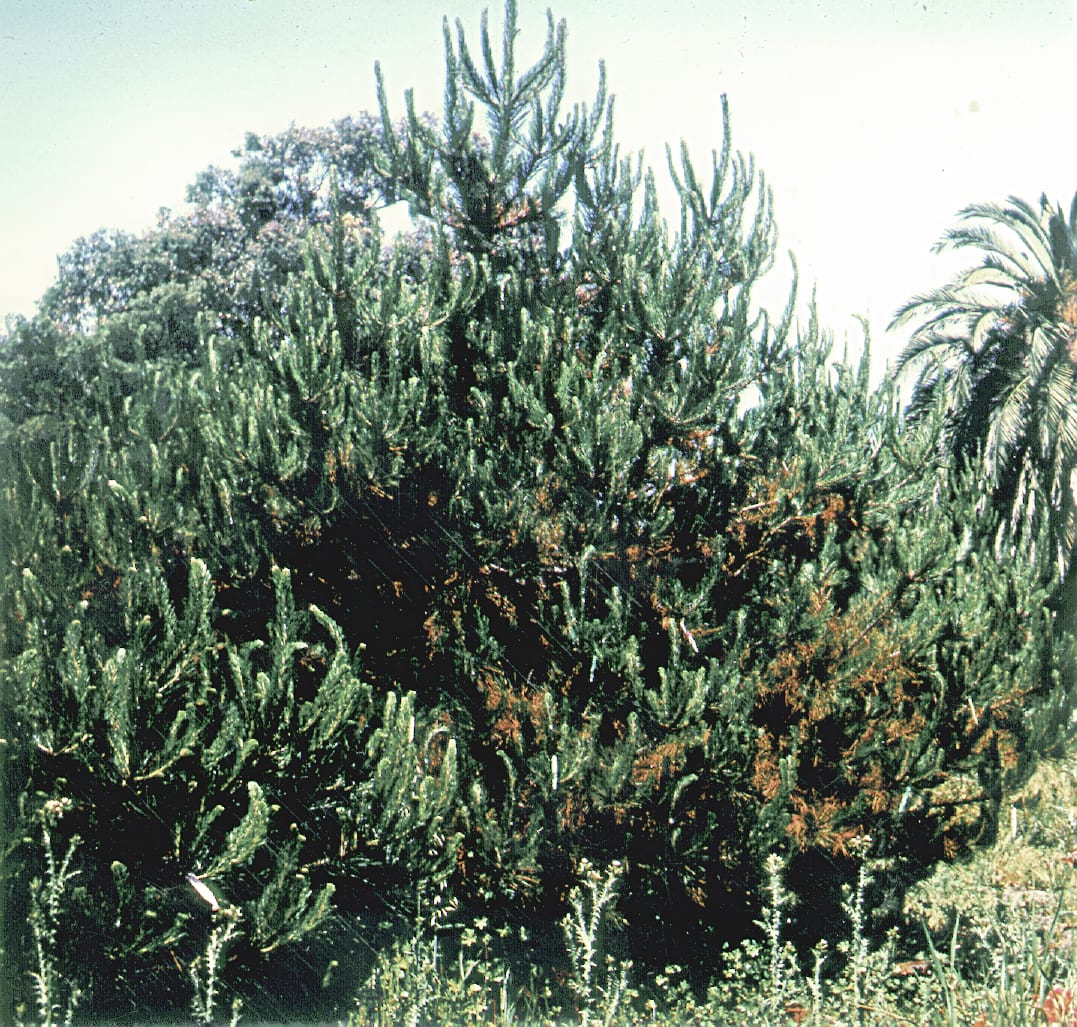Conifers.
Several species of “froghoppers” embracing the genera of Aphrophora, Clastoptera, Philaenus, and Prosopia.
The adults are blunt, wedge-shaped, 1/4 in. – 1/2 in. long; gray to brown, sometimes with colorful stripes encircling the thorax; capable of jumping or flying; prothorax not extending over the back; antennae arise from in front of eyes; tibia with 1-2 teeth before tip, crowned with short, stout spines.
Their eggs are tiny, laid on host plant or weeds and other vegetation nearby. Eggs hatch after 30o F days. Nymphs are very small; black with light-colored thorax. Feed almost immediately after hatching by inserting sucking mouthparts into living vegetation to feed on sap. Bubbly droplets of fluid emitted from anus, eventually enveloping the insect with froth.
Fir, juniper, pine, and spruce are favored.
They are found throughout the United States.
Temperatures above 60∞ F. with high relative humidity are favored conditions.
Easily noticed by the frothy masses of “spittle” clinging to foliage. Dieback of plant tips, loss of needles, and eventual death are the results if not treated
There are one to two generations annually, depending on species. Eggs overwinter on host trees or on nearby vegetation, hatching in the spring. Nymphs begin to feed immediately or crawl back onto host trees, feeding until October. Adults are plentiful by mid-summer, laying eggs by August.


